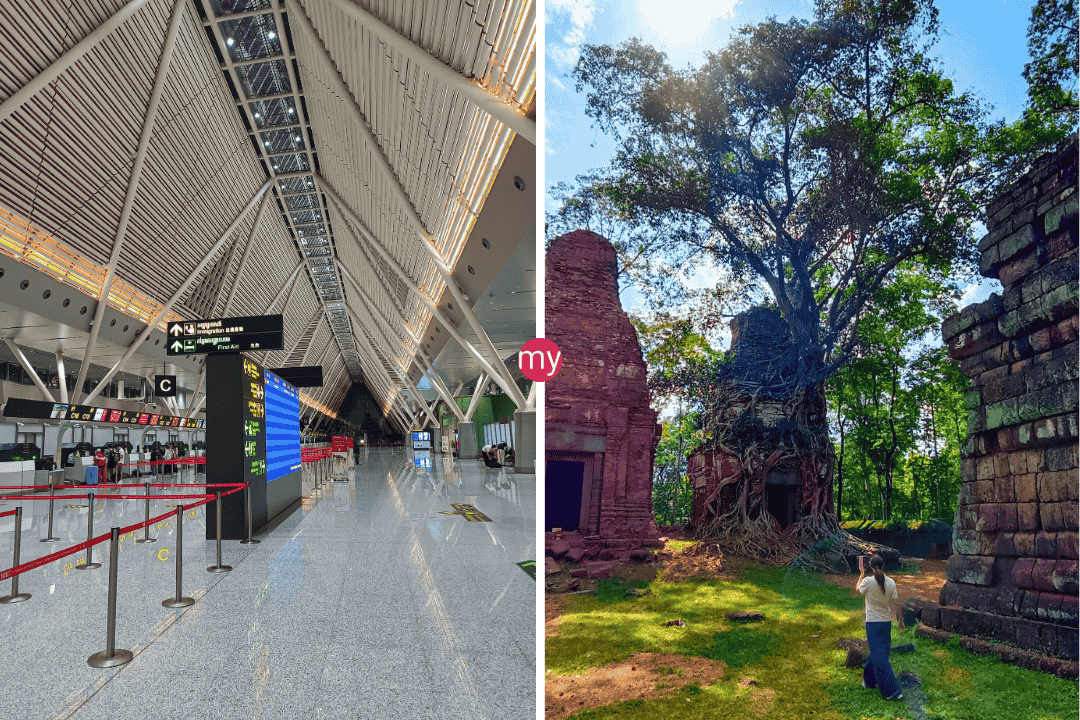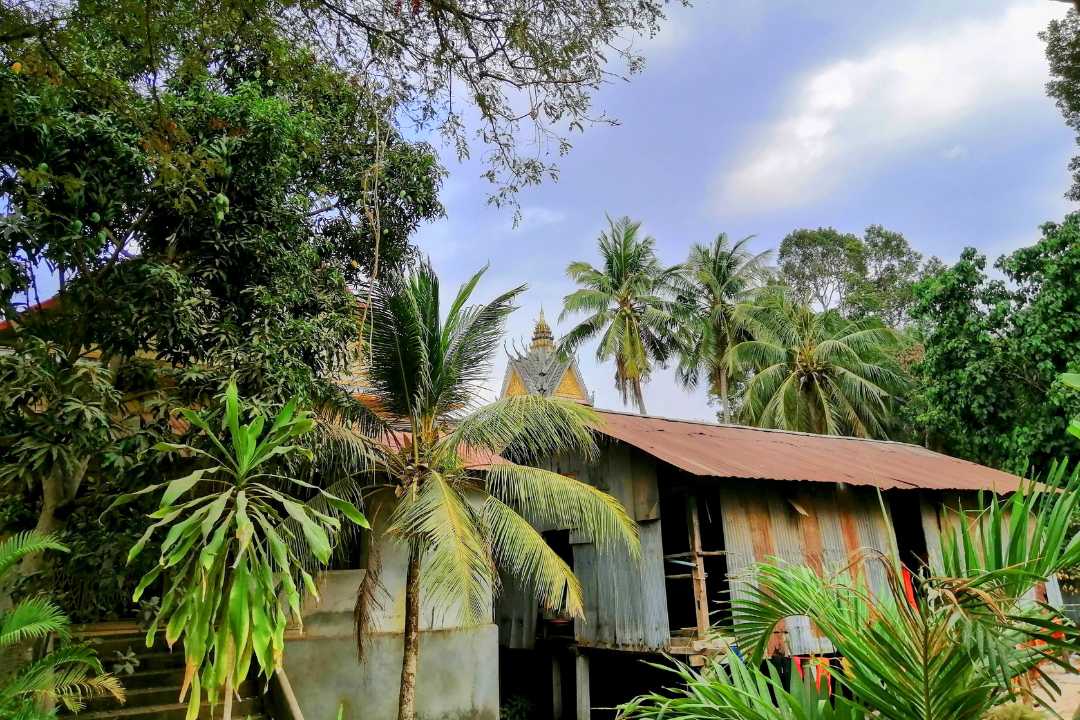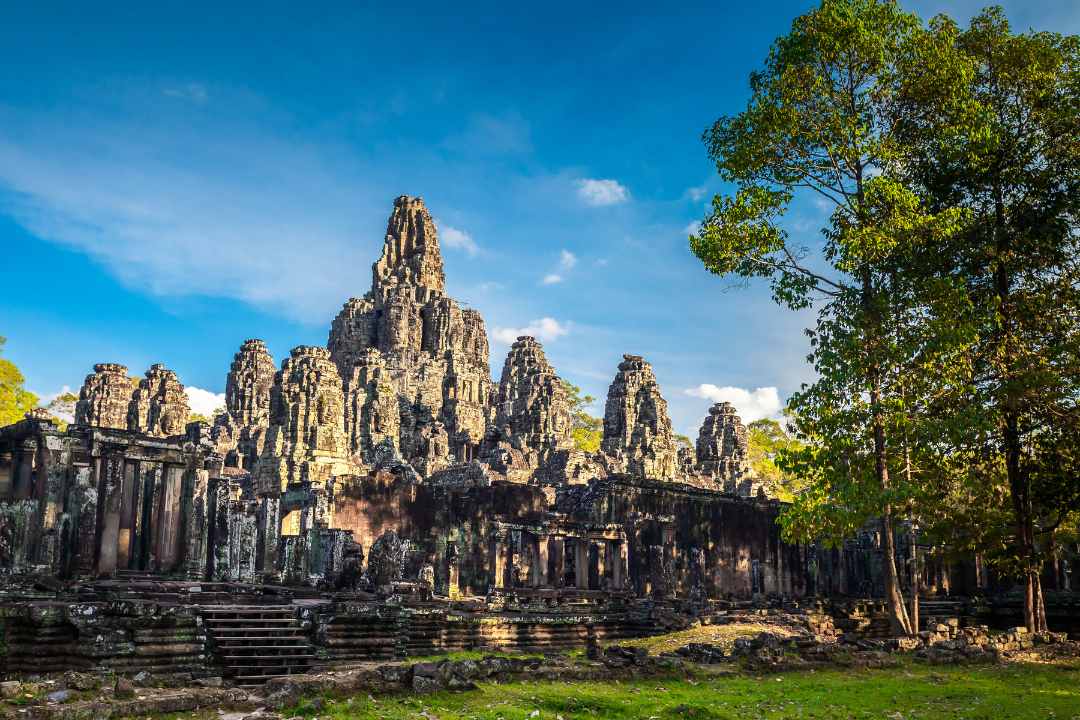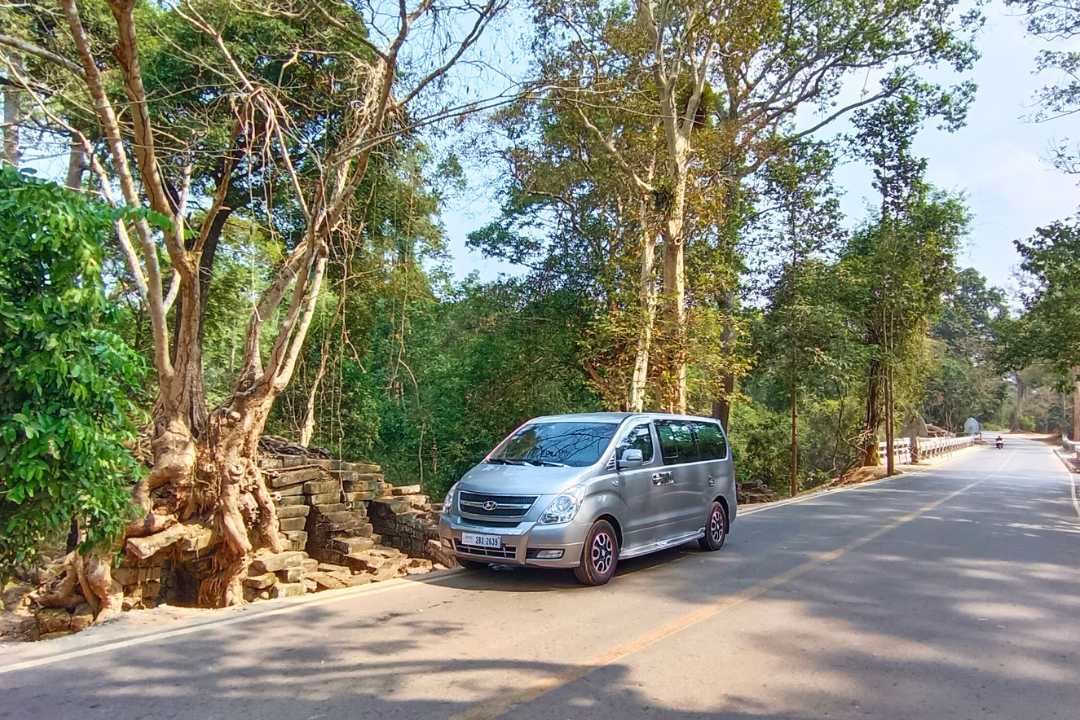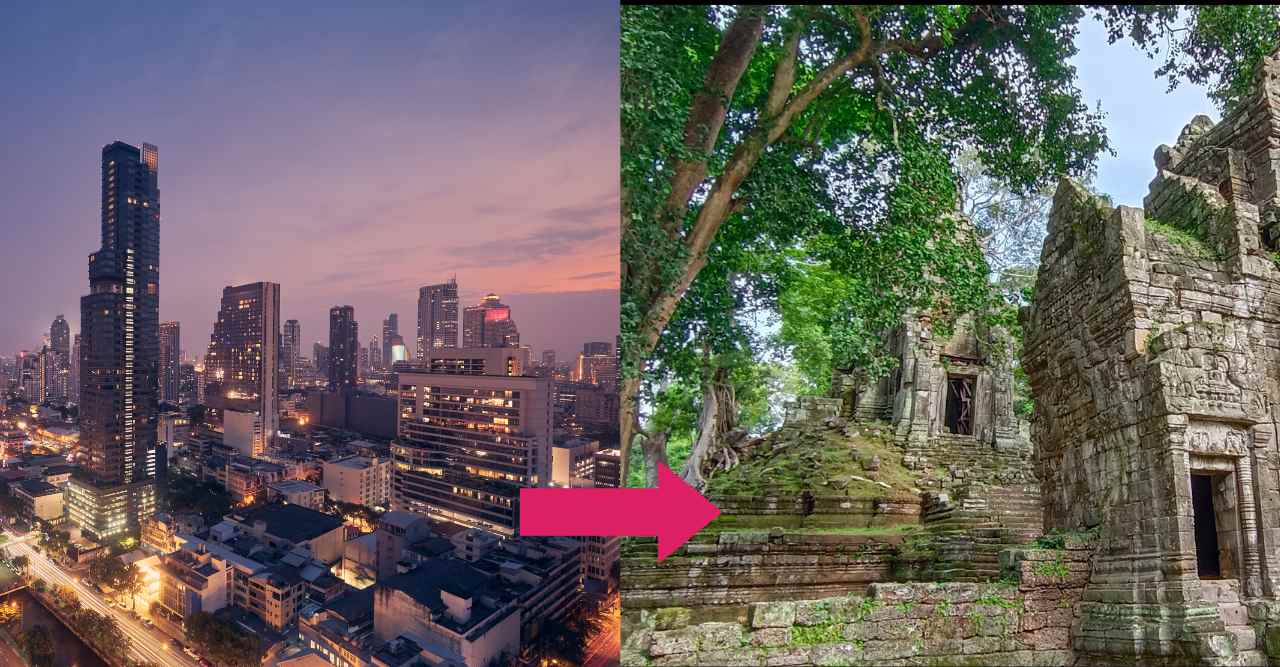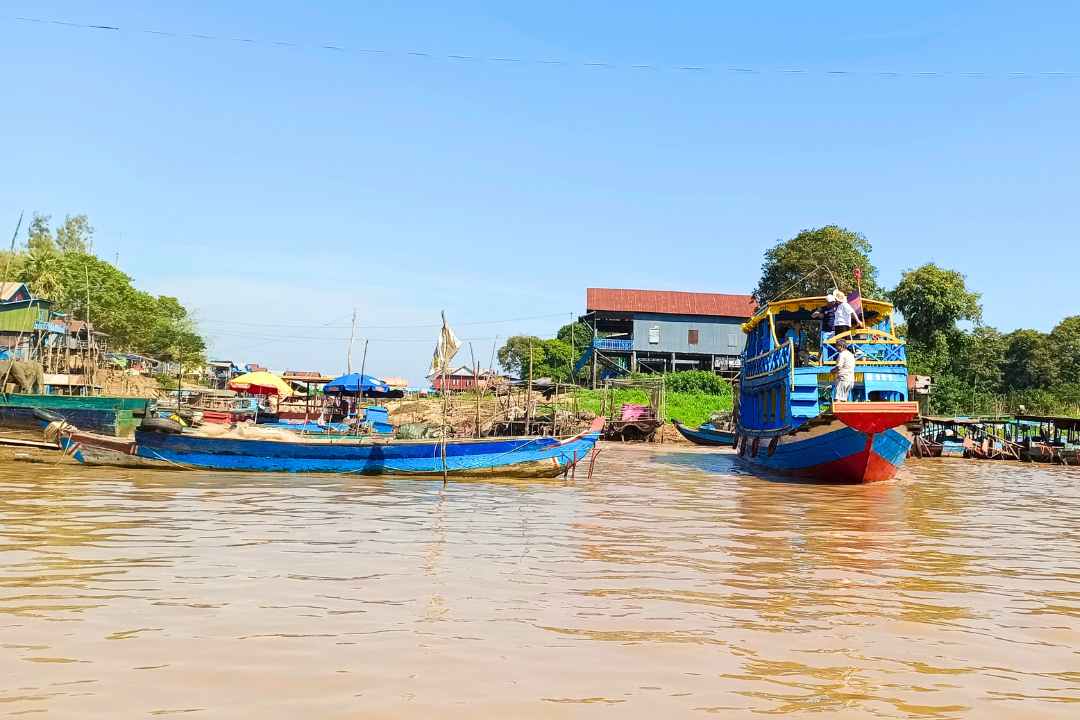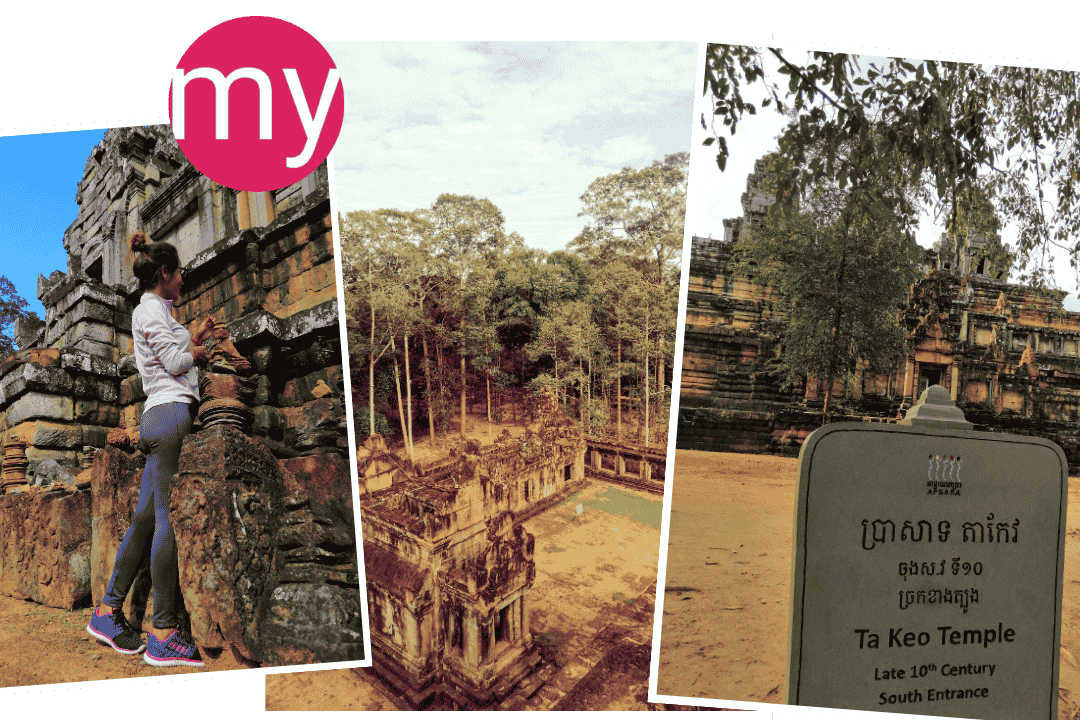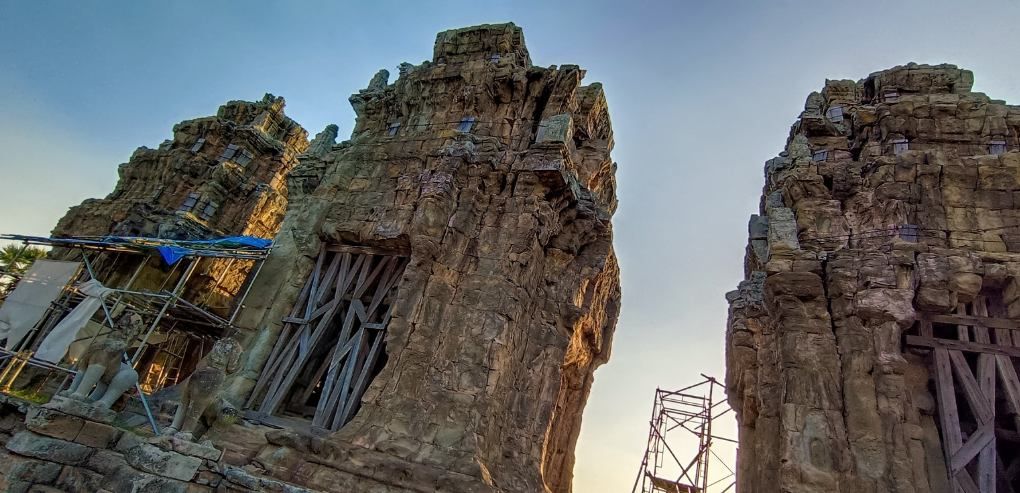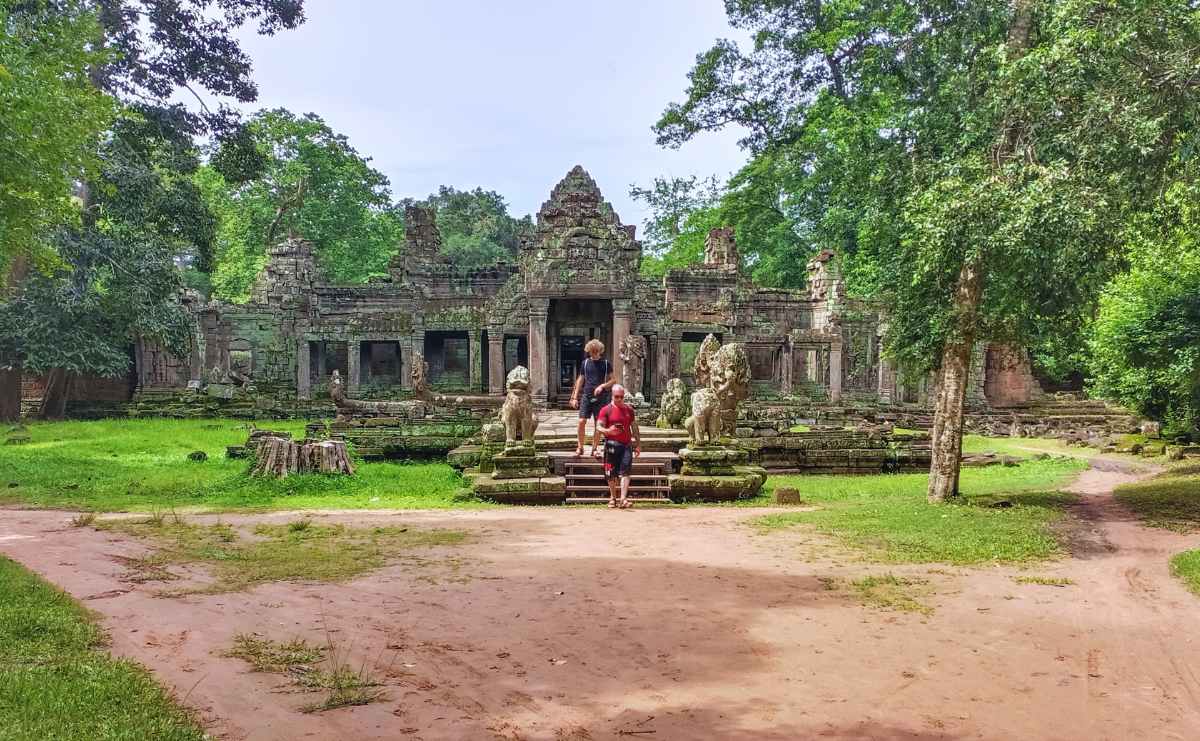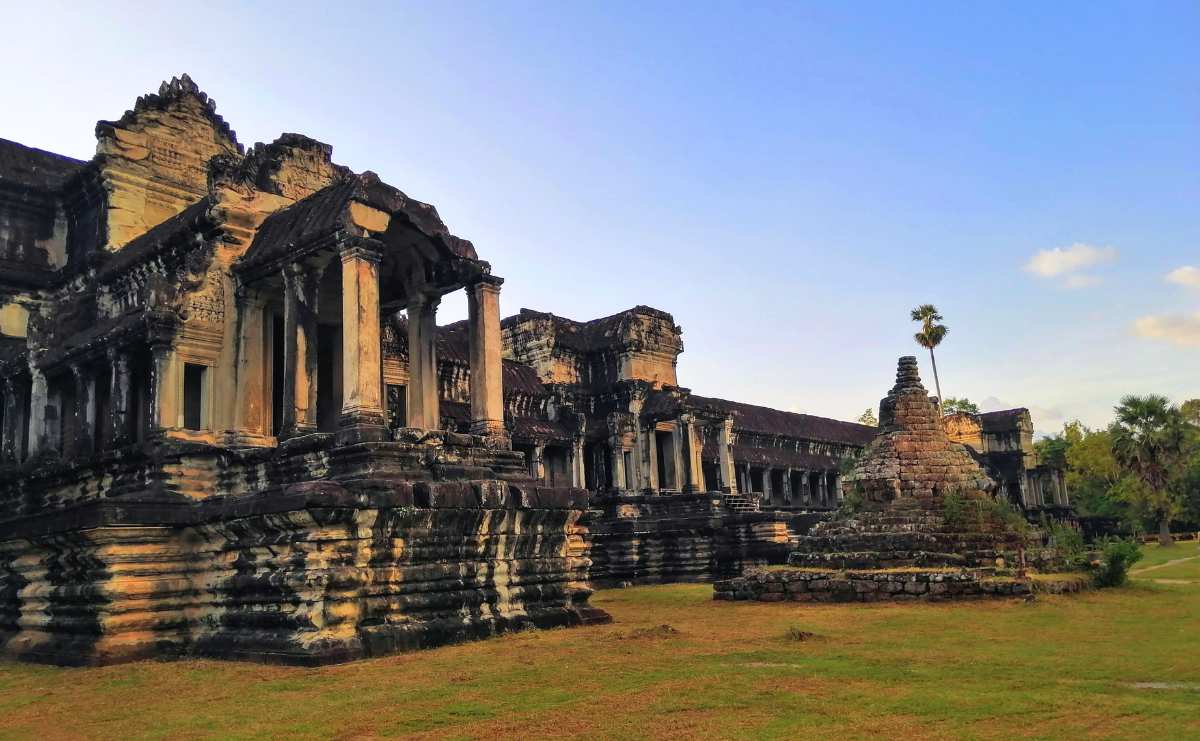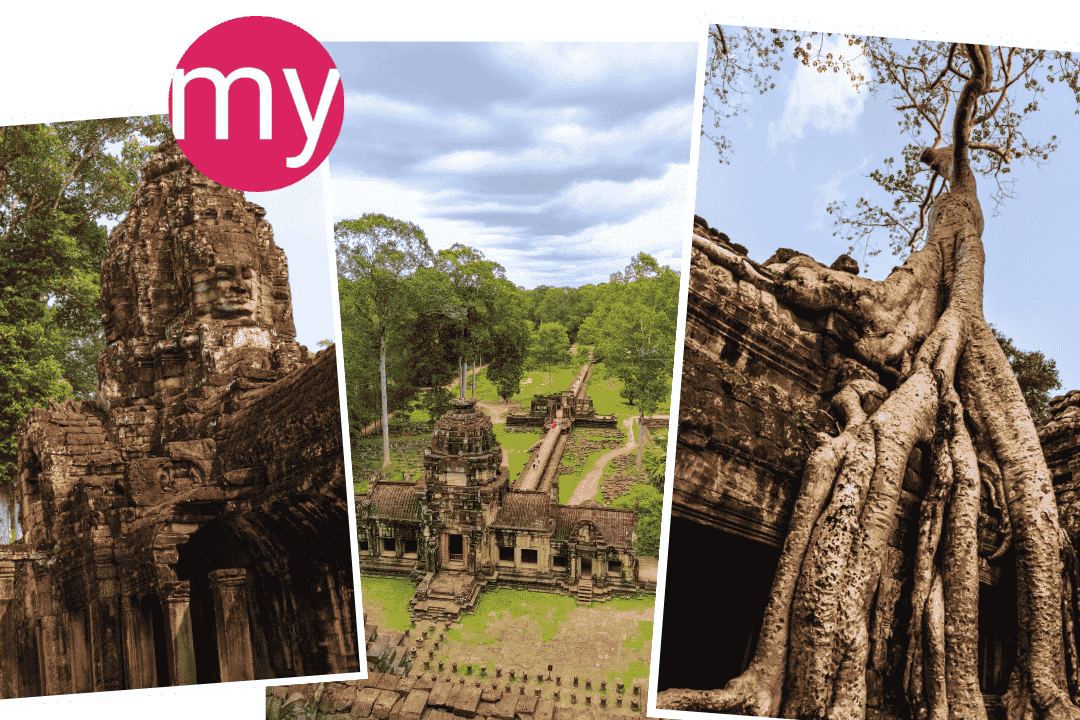How to Find Peaceful Temples in Angkor - 12 Crowd-Free Sanctuaries That Reduce Tourist Stress by 90% in 2025 and for 2026
Which temples are least crowded in Angkor? Tired of shoulder-to-shoulder crowds and noisy photo ops? These quiet temples feel like time stood still — no chaos, no waiting, just silence and space.
Skip the selfie stick wars and photo op madness. These quiet temples offer pure peace — no crowds, no noise, just you and 900-year-old stones.
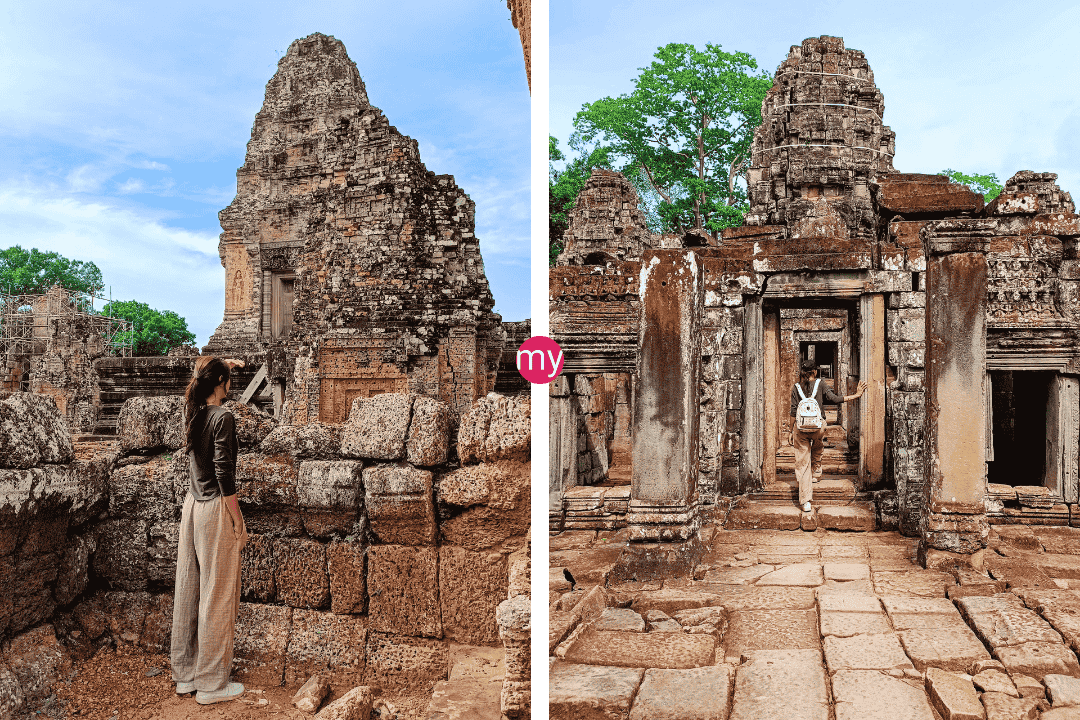
Which temples are least crowded in Angkor? East Mebon, Ta Som, and Neak Pean see only 55-72 daily visitors compared to Angkor Wat’s 5,000+ crowds. Visiting during the 12:00-2:00 PM window cuts crowds by 83%, while green season travel offers 80% fewer tourists. Which temples are least crowded in Angkor? The answer lies in strategic timing and smart temple selection.
Overview
Which temples are least crowded in Angkor? The answer starts with quiet temples in Angkor like East Mebon, Ta Som, and Neak Pean that receive fewer than 100 daily visitors. These peaceful Angkor temples offer the same stunning architecture as famous sites but with 94-98% fewer crowds. Hidden temples in Angkor Wat complex include off the beaten path Angkor locations that most tourists skip entirely.
Key facts about crowd-free temples Angkor:
- East Mebon sees only 72 daily visitors versus Ta Prohm’s 3,200
- Midday visits (12:00-2:00 PM) reduce crowds by 83%
- Green season travel cuts visitor numbers by up to 80%
These alternative Angkor temples help travelers find relaxing Angkor temple experience without the stress of massive tourist groups.
Which Temples Are Least Crowded in Angkor? The Millionaire’s Secret to Temple-Hopping Like a Boss (While Everyone Else Fights for Selfie Space)
Summary
Which temples are least crowded in Angkor? Recent 2025 data shows East Mebon attracts just 72 visitors daily while Ta Som and Neak Pean see only 65 and 55 respectively. This represents a 94-98% reduction compared to popular temples. Studies reveal that less visited Angkor temples offer better photography conditions and more time for peaceful reflection. Strategic timing during lunch hours (12:00-2:00 PM) creates non-touristy temples Cambodia experiences even at major sites. The combination of secret Angkor ruins selection and smart scheduling transforms any visit into a solo traveler temples Angkor adventure.
Picture this: you’re standing alone in a 900-year-old temple. The only sounds are birds and rustling leaves. No selfie sticks. No tour group chatter. Just you and ancient stones that have stories to tell.
Which temples are least crowded in Angkor? The answer might surprise you. While thousands of people fight for space at Angkor Wat each morning, incredible temples sit empty just miles away. Smart travelers know these quiet temples in Angkor offer better experiences than the famous spots.
Let’s get real about crowds at Angkor. Angkor Wat sees over 5,000 visitors daily during peak season. That’s roughly one person per square meter at sunrise. But hidden temples in Angkor Wat complex like East Mebon? Only 72 visitors per day. Do the math – that’s 98% fewer people competing for the same magic.
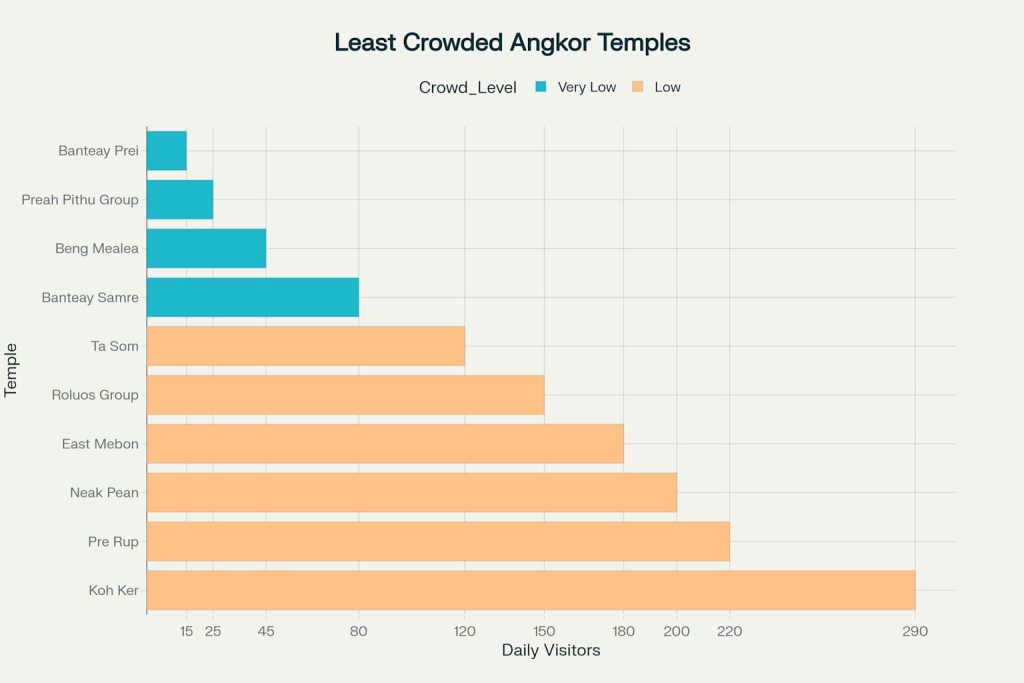
Wait, this is going to change everything you thought about temple touring.
Private Angkor Wat Sunset Tour – Full-Day Guided Experience ✅ Angkor Thom exploration ✅ Bayon Temple visit ✅ Monk blessing ceremony ✅ Ta Prohm jungle temple ✅ Angkor Wat sunset finale
Email: booking@mysiemreaptours.com
Because sunset memories beat sunrise stress every time.
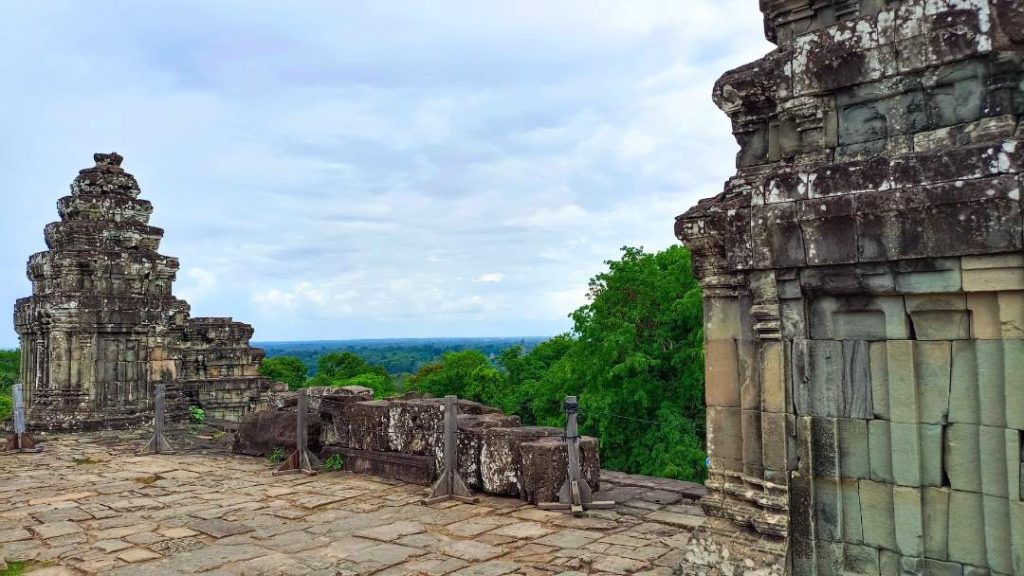
12 Peaceful Temples That Most Tourists Never Find
1. East Mebon Temple: The Forgotten Island Paradise
Daily visitors: 72 people
Crowd level: Extremely low
Best time: 9:00-11:00 AM
East Mebon stands on what used to be an island in the middle of a huge lake. Now the water is gone, but the temple remains. This peaceful Angkor temple has five towers and elephant statues at each corner. Most people skip it completely. Their loss is your gain.
The temple was built in 953 AD. It’s part of the Grand Loop circuit but somehow stays empty. Photographers love this place because you can get clean shots without other tourists. The afternoon light hits the towers perfectly around 2:00 PM.
2. Ta Som: Where Trees Hug Ancient Stones
Daily visitors: 65 people
Crowd level: Very low
Best time: 9:00 AM-12:00 PM
Ta Som is famous for one thing: a massive tree growing through its eastern gate. The roots wrap around the stone like nature is giving the temple a hug. This off the beaten path Angkor spot feels like a movie set.
Built by King Jayavarman VII, Ta Som is smaller than other temples. That’s exactly why it stays quiet. The tree-covered entrance makes for incredible photos. You’ll probably have it to yourself for at least 20 minutes.
3. Neak Pean: The Floating Temple
Daily visitors: 55 people
Crowd level: Ultra-low
Best time: 10:00 AM-1:00 PM
Neak Pean sits on an artificial island. You walk across a wooden bridge to reach it. The temple was designed as a hospital where water from different pools would heal different diseases. Today, it’s one of the most calm temples in Angkor complex.
The walk to Neak Pean takes about 10 minutes through flooded forest. During dry season, you see the full structure. Wet season brings reflecting waters that double the temple’s beauty. Either way, you’ll likely be alone with this secret Angkor ruins masterpiece.
4. Banteay Samre: The Hidden Architectural Masterpiece
Daily visitors: 210 people
Crowd level: Low
Best time: 10:00 AM-2:00 PM
Banteay Samre sits 15 kilometers from Angkor Wat. The distance keeps crowds away. This temple has some of the best-preserved carvings in the entire complex. The central sanctuary towers over perfectly maintained walls.
Built in the early 12th century, Banteay Samre follows the same style as Angkor Wat. But with 210 visitors versus 5,000+, you actually have time to study the details. The moat around the temple creates peaceful reflections. This spot appears on our Journey Through Time and Nature tour for good reason.
5. Preah Khan: The Temple City
Daily visitors: 450 people
Crowd level: Moderate
Best time: 10:00 AM-2:00 PM
Preah Khan covers 138 acres. It’s huge but most tourists only see the main entrance area. Smart visitors explore the back sections where you’ll find unknown temples in Angkor Park experiences. Trees grow through walls creating natural skylights.
This temple served as a university and monastery. You can walk for hours through different courtyards and halls. The less visited Angkor temples sections in the northeast corner stay completely empty. Bring a flashlight for the darker corridors.
6. Pre Rup Temple: Sunset Without the Crowds
Daily visitors: 600 people
Best time for crowds: 2:00-4:00 PM
Sunset alternative: Much less crowded than Phnom Bakheng
Pre Rup means “turn the body” in Khmer. Ancient cremation ceremonies happened here. Today, it’s one of the best sunset spots that tourists overlook. While everyone fights for space at Phnom Bakheng, Pre Rup offers similar views with room to breathe.
The temple has three tiers you can climb. The top level gives 360-degree views across the forest. Late afternoon light turns the red brick into gold. You can include Pre Rup in a Private Angkor Wat Mix Temples Photo Tour for the perfect shot.
7. Banteay Prei: The Most Secret Temple
Daily visitors: 15 people
Crowd level: Practically empty
Best time: Any time
Banteay Prei might be the most secluded temples in Siem Reap that you can actually visit. Only 15 people find this place each day. It sits within Angkor Thom but off the main paths. The temple is small but perfectly formed.
Local guides call this their “secret spot.” The structure shows classic Bayon-style architecture but without restoration. Moss covers the stones. Roots push through cracks. It feels like stepping into an archaeology documentary. Few tourists know it exists.
8. Preah Pithu Group: Five Temples in One
Daily visitors: 25 people
Crowd level: Very low
Best time: Any time
The Preah Pithu Group actually includes five separate temples clustered together. They sit north of the Terrace of the Elephants but most people miss them completely. Each temple has a different design and building period.
These quiet places in Angkor Wat area offer variety in a small space. You can spend an hour exploring different architectural styles. The temples face east toward the rising sun. Morning light creates dramatic shadows between the structures.
9. Chau Say Tevoda: The Lonely Twin
Daily visitors: 180 people
Crowd level: Low
Best time: 8:00-10:00 AM
Chau Say Tevoda sits across from Thommanon temple. Most people visit Thommanon and skip its twin. That’s a mistake. Chau Say Tevoda has better-preserved carvings and fewer restoration marks. The temple follows classical Angkor Wat style.
French and Japanese teams restored this temple in the 1960s. They did excellent work preserving original details. The relaxing Angkor temple experience here comes from having space to appreciate the craftsmanship. You’re included on the Small Circuit Tour if you want guided context.
Everyone says dry season is better. They’re missing the real magic.
Journey Through Time and Nature Tour – Full Day Adventure ✅ Banteay Srei temple exploration ✅ Beng Mealea jungle experience ✅ Roluos Group historical sites ✅ Maximum 10 participants ✅ Off-main-circuit positioning
Email: booking@mysiemreaptours.com
Master the art of crowd avoidance with expert guidance.
Timing Strategies: When Crowds Disappear
The Magic Midday Window
Research shows that quietest time to visit Angkor is 12:00-2:00 PM. While other tourists eat lunch or hide from heat, you get 83% fewer crowds at every temple. Even Angkor Wat feels peaceful during this window.
The midday strategy works because:
- Tour groups break for lunch
- Individual tourists avoid the heat
- Lighting stays good for photos
- Temperatures peak but stay manageable with preparation
Scientific crowd data:
| Time Period | Visitor Percentage | Strategy |
|---|---|---|
| 5:00-8:00 AM | 58% | Avoid completely |
| 12:00-2:00 PM | 5% | Perfect timing |
| 2:00-4:00 PM | 15% | Good choice |
Green Season: The 80% Solution
Angkor Wat early morning tips usually focus on dry season visits. But green season (May-October) cuts crowds by up to 80%. Rain falls mostly in afternoon bursts. Mornings stay clear for temple visits.
Green season benefits:
- Hotel rates drop 30-50%
- Temples have better atmosphere
- Landscape looks more lush
- Avoid crowds Angkor Wat becomes automatic
The rain creates dramatic skies for photos. Wet stone shows richer colors. Forest sounds replace tourist noise. This season offers the most relaxing Angkor temple experience possible.
10. Beng Mealea: The Jungle Adventure
Daily visitors: ~200 people
Distance: 66km from Siem Reap
Experience level: Adventurous
Beng Mealea requires a longer drive but rewards you with the ultimate Angkor without crowds experience. This temple stayed buried under jungle for centuries. Trees grow through the roof. Roots split walls in half. Wooden walkways let you climb over fallen stones.
Built in the same style as Angkor Wat, Beng Mealea shows what happens when nature reclaims architecture. The atmosphere feels like Tomb Raider movies. You can explore for hours without seeing another person. The Koh Ker and Beng Mealea guided tour combines this adventure with even more remote sites.
11. Koh Ker: The Remote Capital
Daily visitors: ~300 people
Distance: 120km from Siem Reap
Unique feature: Climbable pyramid
Koh Ker served as Cambodia’s capital from 928-944 AD. The main temple, Prasat Thom, is a 36-meter pyramid you can actually climb. No crowds. No restrictions. Just you and one of the most non-touristy temples Cambodia offers.
The drive takes 2.5 hours but the payoff is huge. Koh Ker has over 180 structures spread across forest. Most stay completely unvisited. You’ll feel like an explorer finding lost cities. This represents the ultimate crowd-free temples Angkor experience.
12. Roluos Group: Where Angkor Began
Daily visitors: 150 people per temple
Distance: 15km from Siem Reap
Historical importance: First Angkor-period temples
The Roluos Group includes Bakong, Preah Ko, and Lolei temples. These predate Angkor Wat by 300 years. They show how Khmer temple building evolved. Most tourists skip them because they’re “outside” the main area.
Bakong has the first pyramid-style temple in Cambodia. Preah Ko features incredible lion statues. Lolei sits on an artificial island. Together, they tell the story of how Angkor started. The Journey Through Time and Nature tour includes these forgotten foundations.
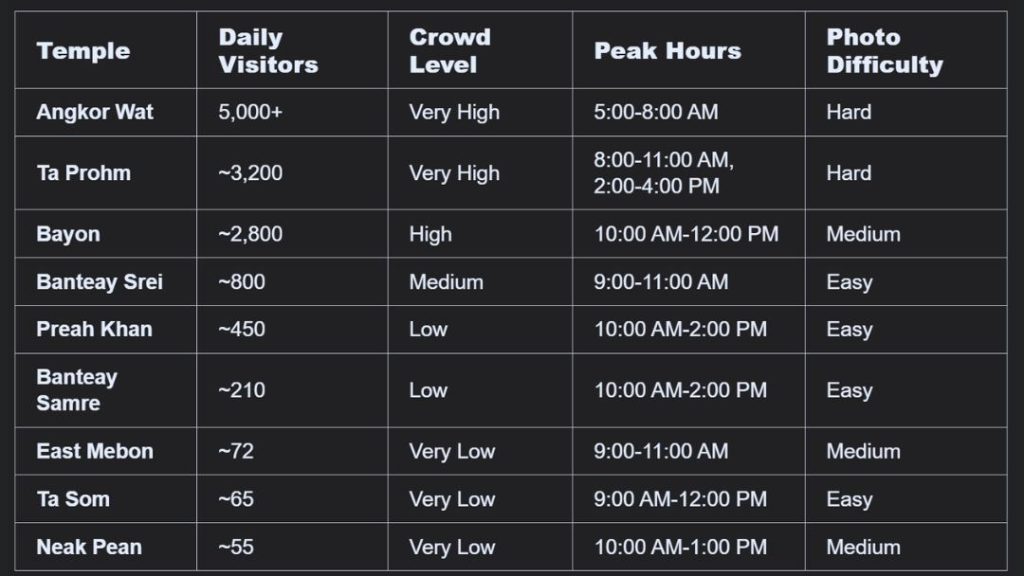
Route Planning: Smart Circuits Beat Popular Paths
The Anti-Crowd Circuit
Smart temple touring means building routes around low-traffic temples Siem Reap offers. Start early at distant temples. Work your way back toward popular sites during lunch hours. Finish at sunset spots that tourists ignore.
Sample Anti-Crowd Route:
- 7:00 AM: Start at Banteay Srei (500 visitors daily)
- 9:00 AM: Banteay Samre (210 visitors daily)
- 11:00 AM: Move to East Mebon (72 visitors daily)
- 1:00 PM: Visit Ta Som (65 visitors daily)
- 3:00 PM: Explore Preah Khan during lunch break
- 5:00 PM: End at Pre Rup for sunset
This route uses alternative Angkor temples to avoid the crowd flow completely. Each stop offers excellent photography without waiting. You see more temples with less stress.
Geographic Spread Strategy
Distance creates natural crowd barriers. Temples more than 15km from Angkor Wat stay much quieter. The lesser-known Angkor temples in outer areas require extra travel time that most tourists skip.
Distance vs. Crowd Analysis:
| Distance Range | Examples | Daily Visitors | Crowd Level |
|---|---|---|---|
| 0-5km | Angkor Wat, Bayon | 3,000-5,000 | Very High |
| 5-15km | Banteay Srei, Ta Som | 65-800 | Low-Medium |
| 15-40km | Banteay Samre, Roluos | 150-210 | Low |
| 40km+ | Beng Mealea, Koh Ker | 200-300 | Very Low |
Monsoon Season Temple Strategies
Wet Season Advantages
Many travelers avoid monsoon season, but it offers the best avoid crowds Angkor Wat opportunities. Rain usually falls in afternoon bursts lasting 1-2 hours. Mornings stay clear for temple visits. Wet stones show richer colors than dry season.
Monsoon Season Benefits:
- 70-80% fewer tourists at all temples
- Lush green landscapes for better photos
- Dramatic cloudy skies instead of boring blue
- Cooler temperatures (78-85°F vs. 90-95°F)
- Better wildlife viewing opportunities
Rain-Friendly Temple Choices
Some temples handle rain better than others. Peaceful Angkor temples with covered areas work well during showers. Preah Khan has many roofed corridors. Banteay Samre offers shelter under intact towers.
Best Rainy Day Temples:
- Preah Khan: Multiple covered corridors
- Banteay Samre: Intact roof sections
- Baphuon: Covered galleries
- Angkor Wat: Large covered areas (but crowded)
Pack quick-dry clothes and waterproof camera protection. Umbrella helps but can be awkward for photography.
Advanced Strategies for Temple Photography
Golden Hour at Empty Temples
The most relaxing Angkor temple experience for photographers happens during golden hour at quiet sites. Ta Som’s tree-covered gate glows in late afternoon light. East Mebon’s towers catch sunrise rays without any crowds.
Best Light Times by Temple:
| Temple | Sunrise | Morning | Afternoon | Sunset |
|---|---|---|---|---|
| East Mebon | Excellent | Good | Great | Good |
| Ta Som | Good | Great | Excellent | Fair |
| Pre Rup | Fair | Good | Good | Excellent |
| Neak Pean | Good | Excellent | Good | Fair |
Personal Reflection on Temple Peace
After visiting Angkor dozens of times, I’ve learned that the quietest temples often provide the most powerful experiences. Standing alone in East Mebon at 2:00 PM, you hear what these places sounded like 900 years ago. Birds calling. Wind through stones. No engine noise or group chatter.
The most peaceful temples teach patience. They reward travelers who take time to plan routes around crowds. They offer meditation opportunities that rushed visits miss completely. You start to understand why ancient people built these places for spiritual reflection.
Which temples are least crowded in Angkor? The answer changes your entire travel approach. Instead of fighting crowds for famous shots, you create unique memories at places most people never see. That’s worth more than any tourist selfie.
Future Outlook for Angkor Tourism
Smart travelers who prioritize temples without tourists Cambodia over Instagram-famous locations will always find magical moments. The key is staying flexible and choosing experience quality over social media recognition.
For personalized guidance on creating your crowd-free Angkor adventure, connect with local experts who understand both tourism patterns and temple significance. Contact our team to design routes that match your interests while avoiding the crowds that diminish temple experiences.
Helpful Resources for Temple Planning
These resources provide current information about temple conditions and crowd patterns:
Official temple management data from Angkor Enterprise offers real-time visitor statistics and seasonal updates for planning optimal timing.
Local expertise and booking through My Siem Reap Tours provides specialized knowledge about quiet temple routes and crowd avoidance strategies.
UNESCO conservation updates help travelers understand which areas have restrictions and which remote sites remain fully accessible for peaceful exploration.
Use these resources to stay informed about changing conditions and new opportunities for crowd-free temple experiences.
Brought to you by Dan and Mat, Your tour planners.
Featured
Explore more on My Siem Reap Tours
Koh Ker and Beng Mealea guided tour | Banteay Srei temple guided tour | Angkor Wat Sunrise tour | Private Angkor Wat Sunset Tour | Koh Ker and Beng Mealea guided tour | Morning Siem Reap floating village tour | Afternoon Siem Reap floating village tour | Private Angkor Wat special tour | Kulen Waterfall small group guided Tour | Private Angkor Wat mix temples photo tour
